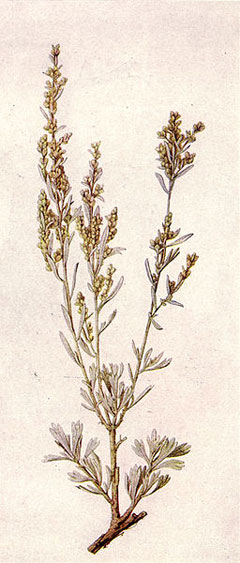
Sage Brush, Big sagebrush, Bonneville big sagebrush
Latin Name: Artemisia tridentata
USDA Hardiness: 4-10
Native Range: NORTHERN AMERICA: Canada (Alberta (south), British Columbia (south)), United States (Nebraska, North Dakota, South Dakota, Colorado, Idaho, Montana, Oregon, Washington, Wyoming, New Mexico, Arizona, California, Nevada, Utah), Mexico (Baja California (Norte))
Edibility Rating: 3 / 5
Medicinal Rating: 2 / 5
Region:
Family:
Plant Type:
Medicinal Uses
Edible Uses
Edible Parts: Leaves Seed | Edible Uses: Condiment TeaLeaves - cooked[61]. The subspecies A. tridentata vaseyana has a pleasant mint-like aroma whilst some other subspecies are very bitter and pungent[164]. The leaves are used as a condiment and to make a tea[257]. Seed - raw or cooked. Oily[46, 61]. It can be roasted then ground into a powder and mixed with water or eaten raw[84, 106, 161, 257]. The seed is very small and fiddly to use[K].
Cultivation
Requires a sunny position and a well-drained soil that is not too rich[1, 11]. Requires a lime-free soil[60]. There are a number of sub-species growing in different habitats from deep fertile soils to poor shallow ones[164]. Plants are longer lived, more hardy and more aromatic when they are grown in a poor dry soil[245]. Established plants are very drought tolerant[200]. This species is not hardy in the colder areas of the country, it tolerates temperatures down to between -5 and -10°c[200]. The young growth in spring, even on mature plants, is frost-tender and so it is best to grow the plants in a position sheltered from the early morning sun[K]. The plant is very aromatic, especially after rain[11, 182]. The pollen of this species is one of the main causes of hayfever in N. America[212]. Plants in this genus are notably resistant to honey fungus[200]. Members of this genus are rarely if ever troubled by browsing deer[233]. The aerial parts can be harvested in summer when they are in full bloom, while roots can be harvested in autumn. Artemisia typically flowers in summer. Artemisia species can vary in growth rate, but many are moderately fast-growing, reaching maturity within 1-2 years under optimal conditions.
Known Hazards
Although no reports of toxicity have been seen for this species, skin contact with some members of this genus can cause dermatitis or other allergic reactions in some people[222].
Habitats
Dry plains and hills on calcareous soils[60]. Found on slightly acid and on alkaline soils[164].
